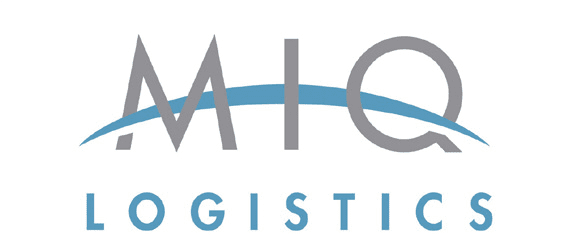Summary
As a logistics company working to improve the transportation and supply chain management needs of their customers, MIQ had a complicated document processing situation they needed to better manage. Operating in and between 80 countries, hundreds of freight invoices were received daily. They were looking for a way to automate freight-invoice data entry and implement document storage to streamline their payment processes. In addition, MIQ was looking for a solution that they could mostly implement themselves and manage internally.
Challenge
There was a limited amount of content similarities in invoices received from various carriers—with around 90% of them different from one another. This led to large amounts of manual effort being spent matching invoices to shipments and entering invoice data. These manual tasks were inefficient and error prone. The process consisted of printing emailed invoices, handwriting key information on each, routing them through various departments, and then sorting and placing them in filing cabinets. Not only was this time consuming for employees, it later made finding the original paperwork very difficult. In addition, these tasks increased turnaround time for accounts receivable, creating a negative impact on cash flow.
A week-long initial consulting engagement determined not only how existing processes at MIQ currently worked, but also what kind of efficiencies they were hoping for. Zia, an Ephesoft partner, determined that MIQ needed a system that was very simple for the end users to operate. MIQ needed the ability to scan invoices, apply metadata tags that would be carried over to SharePoint, and to notify the appropriate departments that the documents were ready for review.
Strategy
Ephesoft Smart Capture was determined to be the ideal solution by the pharmaceutical company, due to its ability to automatically classify, separate, sort, and extract data from paper, fax, and electronic documents. Employees from MIQ travelled to Boulder, Colorado for a week-long training on solutions to ensure a successful implementation and to guide leadership on usage. MIQ, Ephesoft, and Zia collaborated to create the ideal approach to handle their ECM needs with Ephesoft’s SharePoint extensibility.
Ephesoft worked with partner Zia to develop a document management approach that would eliminate the manual processing of files. A two-part implementation was decided on for two different segments of the business. Over a three-month period, the first phase of the project involved creating a system with robust features that were still simple to use, including Ephesoft’s capture capabilities. The second phase was put in place over another three-month period. MIQ now had the kind of document processing solution they had been searching for, utilizing Ephesoft’s capture solutions to streamline business processes.
We’ve been able to reduce the risk of lost documents, the amount of time spent on document retrieval and filing, the number of data entry errors, and the length of time it takes us to pay our carriers.
Amy Franklin (Senior Business Analyst, MIQ Logistics)
Results
After implementing Ephesoft Smart Capture into their document management system, MIQ has seen strong results. Papers are scanned, emails are uploaded directly to Ephesoft, and notes are recorded there for easy accessibility to applicable departments. Since implementing automation, there has been a decrease in data entry errors and what has been processed and received is now transparent. Metadata is tagged in Ephesoft and sent to SharePoint through a robust integration, making search simple and reducing document retrieval times. Because the system now moves faster, carriers are paid sooner leading to improved cash flow.
“We’ve been able to reduce the risk of lost documents, the amount of time spent on document retrieval and filing, the number of data entry errors, and the length of time it takes us to pay our carriers,” said Amy Franklin, Senior Business Analyst at MIQ Logistics. The solution has worked so well for MIQ, they are now planning for a third phase to further improve their processes.
Read full case study
